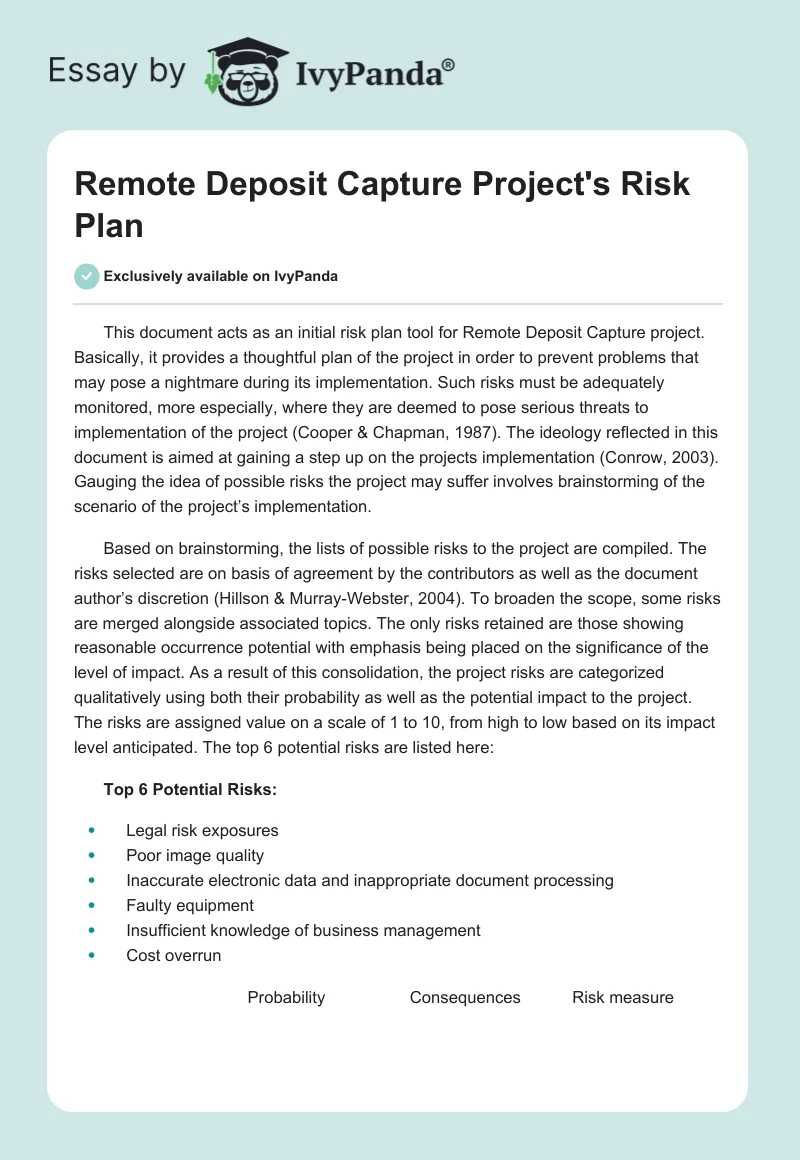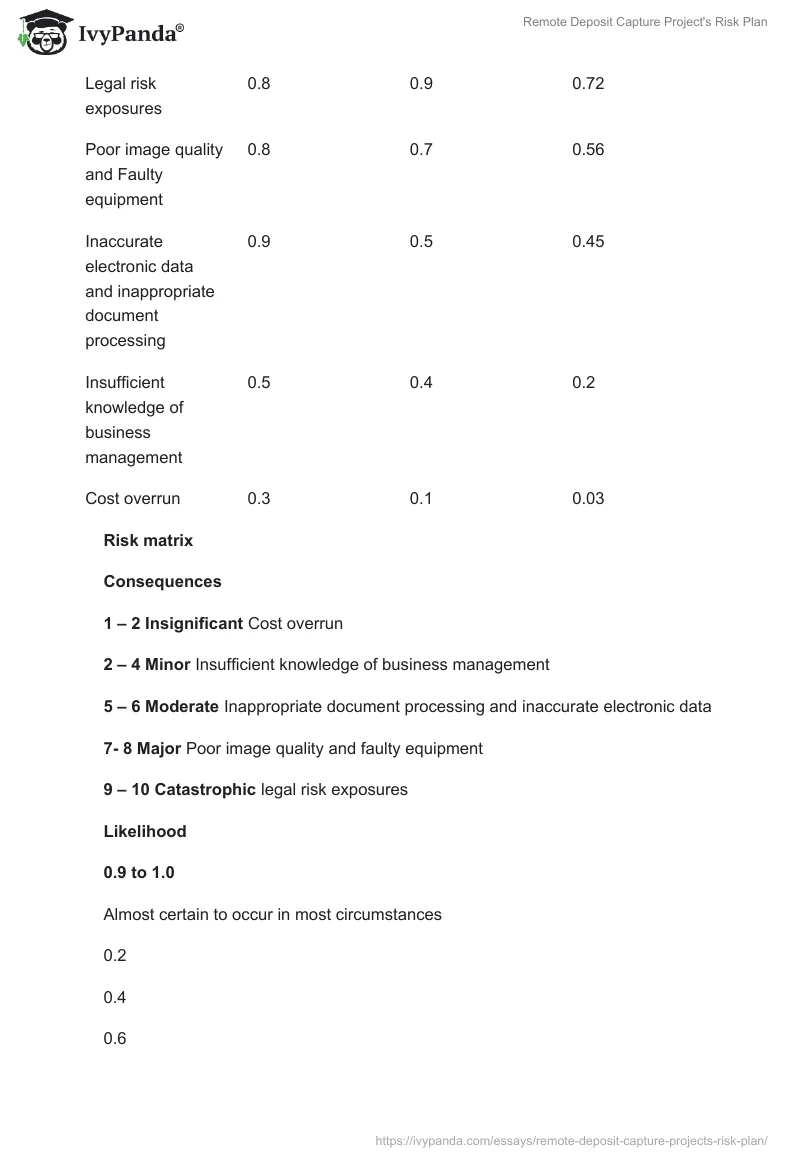This document acts as an initial risk plan tool for Remote Deposit Capture project. Basically, it provides a thoughtful plan of the project in order to prevent problems that may pose a nightmare during its implementation. Such risks must be adequately monitored, more especially, where they are deemed to pose serious threats to implementation of the project (Cooper & Chapman, 1987). The ideology reflected in this document is aimed at gaining a step up on the projects implementation (Conrow, 2003). Gauging the idea of possible risks the project may suffer involves brainstorming of the scenario of the project’s implementation.
Based on brainstorming, the lists of possible risks to the project are compiled. The risks selected are on basis of agreement by the contributors as well as the document author’s discretion (Hillson & Murray-Webster, 2004). To broaden the scope, some risks are merged alongside associated topics. The only risks retained are those showing reasonable occurrence potential with emphasis being placed on the significance of the level of impact. As a result of this consolidation, the project risks are categorized qualitatively using both their probability as well as the potential impact to the project. The risks are assigned value on a scale of 1 to 10, from high to low based on its impact level anticipated. The top 6 potential risks are listed here:
Top 6 Potential Risks:
- Legal risk exposures
- Poor image quality
- Inaccurate electronic data and inappropriate document processing
- Faulty equipment
- Insufficient knowledge of business management
- Cost overrun
Risk matrix
Despite the fact that there were various potential risks which posed threat to the success of the project, some are more likely to have higher priority as compared to the others. The table below illustrates the reactions recommended for identified risks.
Legal risk exposure
Legal challenge has been identified as the leading risk challenge the business may encounter. This is mainly attributed to many other factors within the business that may give arise due to customer disgruntlement. To avoid this risk, it is recommended that all issues which may lead to fault on the side of the organization and hence client disgruntlement are effectively addressed (Fischhoff, Lichtenstein, Slovic, Derby, & Keeney, 1981). This will not only increase success of the project but also help avoid additional expenses through hefty payouts as a result of client law suites. More often than not, happy clients will not look for reasons to sue. Additionally, in case of disputes, negotiations should be initiated early enough to avoid any law suites which may arise. Communication is therefore fundamental to avoid any challenges. Legal consult should be sought in all areas of the project’s implementation. This is the only way to guarantee that legal risks are kept at minimal. Additionally, careful review should be done to ensure the project is in compliance to all the relevant statutes. This measure is crucial to success of the project. The probable cost for this risk is basically on legal consultation as this does not require a permanent legal employee. The consultation fee is only projected to cost $500 annually.
References
Conrow, E. H. (2003). Effective Risk Management: Some Keys to Success (second edition), Reston VA, USA: American Institute of Aeronautics and Astronautics.
Cooper, D. F. & Chapman, C. B. (1987). Risk analysis for large projects. Chichester, UK: J Wiley.
Fischhoff, B., Lichtenstein, S., Slovic, P., Derby, S. L. & Keeney, R. L. (1981). Acceptable risk. Cambridge, UK: Cambridge University Press.
Hillson, D. A. & Murray-Webster, R. E. (2004). Understanding and managing risk attitude. Aldershot, UK: Gower.


